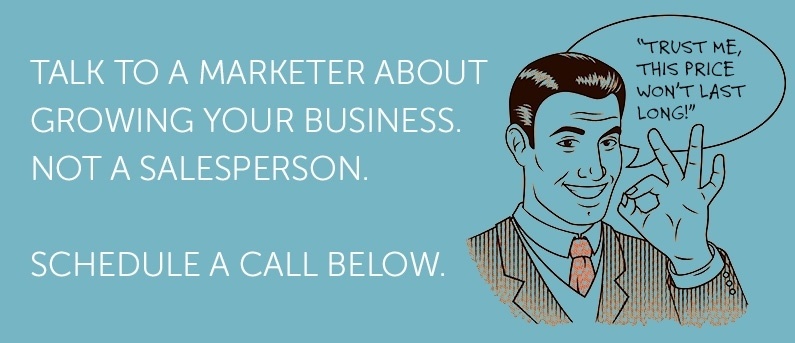The first few years of the new millennium has brought some super-sexy strides in evolution—both Darwinian and marketing—and it’s time we acknowledge where we’ve come from and where we’re going. Let’s look at how Darwin’s theory of natural selection applies to the evolution of marketing, and see if it gives us clues to where we’ll end up. 
Evolution. The word has inspired scientists, artists, writers and controversy since its inception. From the day Charles Darwin came up with the idea of natural selection and survival of the fittest, the principle of evolution has – well, evolved (rather much like Darwin’s beard did over the years!) In other words, it developed a life of its own and has taken turns we could never have expected, much less controlled. Rather like marketing has evolved, in fact. The question is: where are we going next? We believe we’re going back to our roots, in a manner of speaking. You don’t believe us? We’ll prove it to you (yes, evidence-based practice really is everything!)
Back to the Neanderthals
Think about it: Word of mouth used to be everything, back in the “olden days.” Cave-men traded with their neighbors based on knowing who had what to exchange. Anyone wanting a particular item would come looking for the person who had it available to trade. Sound familiar? It should. It’s the principle on which inbound marketing is based!
But one thing at a time, let’s not rush in.
So, to let potential customers know what he had available, a trader had to make sure others knew about it and would spread the word. When the customer came along, he’d lay out his wares as attractively as he could to get the best possible value in exchange. If the guy in the next cave had the same item, they probably knocked each other on the head with a stick to beat the competition (thankfully we don’t do that anymore).
This “simple trade” era lasted until around mid-19th century, so it’s been tested by time. Lots of time, in fact! Whatever was available was what you sold, and you sold it to whoever would buy it.
Learning to Walk Upright
Once we learned to use our thumbs and walk upright, we realized (as humans tend to do) that there’s always a better way to do things. Some bright sparks invented machinery and the industrial revolution began. When we had more to sell and trade, we needed more customers to supply it to. And so we learned to market our products and services, aka the production era or “walking upright in the commerce world!”
Somewhere around the Roaring Twenties it started becoming more of a challenge to find customers. We got bitten by the human greed bug and everyone wanted more money, more sales, more status, in a world that was already saturated with consumerism and competition. Not being backwards in coming forwards, our fathers (and mothers) set out to find a way to get what they wanted, and the sales era arrived with gusto.
And Sales Begat Marketing...
After we learnt how to walk, we were running. We started employing whole departments full of marketing staff to handle advertising, publicity, public relations, sales, launches, promotions, branding and communications. Darwin must have been dancing a jig—beard and all—to see how fully we were implementing his hypothesis. And it worked, for a while. The customer became the focus of the business strategy. Marketing evolved into an end in itself and became the primary goal of the business.
The Last Decade
The times they are a-changin’, no question of that. Over the first 10 years of the new century we’ve seen a massive shift—in business, in technology, in medicine, and in progress in general. One of the biggest evolutions that has happened in marketing is the move towards inbound marketing. We’ve done a complete 360 degree turnabout from ‘pushing’ information at our target market to inbound marketing.
Here’s how inbound marketing differs from what we were doing just a few years ago:
- Audience Reach
- Then: Marketing to the masses – the more people you could reach with a single message, the more cost effective it was
- Now: Marketing to the individual – the more customized the message is, the better the return on investment
- Frequency
- Then: Interruption marketing – the message was designed to intrude into the consciousness of our target customer, regardless of where he was and what he was doing at the time
- Now: Selective consumption – the customer now has the power to accept or reject each (and almost every) individual message, based on his own circumstances at the time
- Sourcing
- Then: Customers searched by product or service to fulfill their requirements
- Now: Customers search by keywords for relevant concepts and are open to less obvious, alternative solutions
- Content
- Then: Promotion was everything and the ‘hard sell’ was top of the hit parade
- Now: Education and value count far more than promotional messages, which are largely discounted and lacking in credibility
- Sales Focus
- Then: Marketing efforts were designed to persuade or ‘convince’ customers to make a buying decision
- Now: Marketing efforts are designed to empower the customer to make an informed choice of his own accord
- Thought Leadership
- Then: Industry experts were people who knew a lot about the market, product or service
- Now: Industry experts are thought leaders—people who take the time to help others learn about the product or service
- Budget
- Then: Marketing was a big-budget item and the seller who threw the most money at it usually got the best results
- Now: Marketing is low-cost or free, and the winner is the company who spends the most effort on getting it right
- Engagement
- Then: Websites were promotional, online brochures. They didn’t enable feedback or engagement, and most digital efforts were also outbound such as email newsletters, direct mail
- Now: An online presence includes social media profiles that interact with the customer and establish a personal relationship between client and brand
- Sales Cycle
- Then: Attention was focused on the top of the sales funnel, on raising awareness and identifying interested customers
- Now: Efforts now focus on the middle of the funnel, on converting leads into customers through a process of nurturing and engagement
- Print Materials
- Then: Printed material focused on quantity and mass distribution
- Now: Printing now focuses on personalized, selective distribution
- Analysis
- Then: Statistics were based on actual sales with a direct correlation between marketing and revenue and only captured those who came in ready to buy
- Now: Reporting focuses on tracking of interest and awareness based on website traffic and leads generated, to capture customers at each stage of the buying cycle
Where to from Here?
Given these shifts, it’s anyone’s guess where we’re going next. What we do know, though, is that you can expect to pay more attention to personalization, tighter niches, killer customer personas, increased investment in thought leadership and increased efforts to attract ever-more demanding—and discerning—customers.
And that’s a stage of evolution where survival is really going to depend on being not only the fittest, but staying at the top of your game.
*Image courtesy of freedigitalphotos.net


